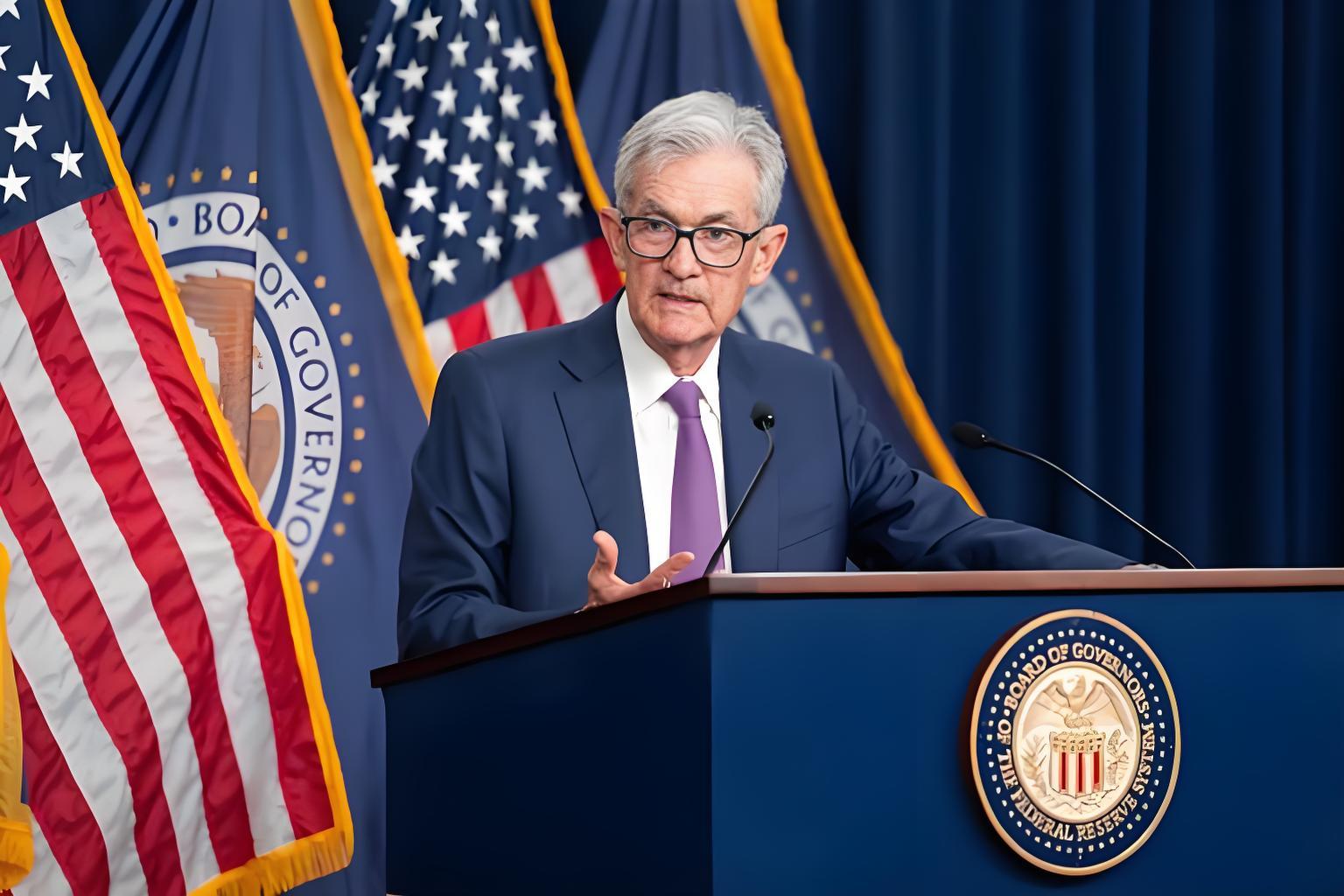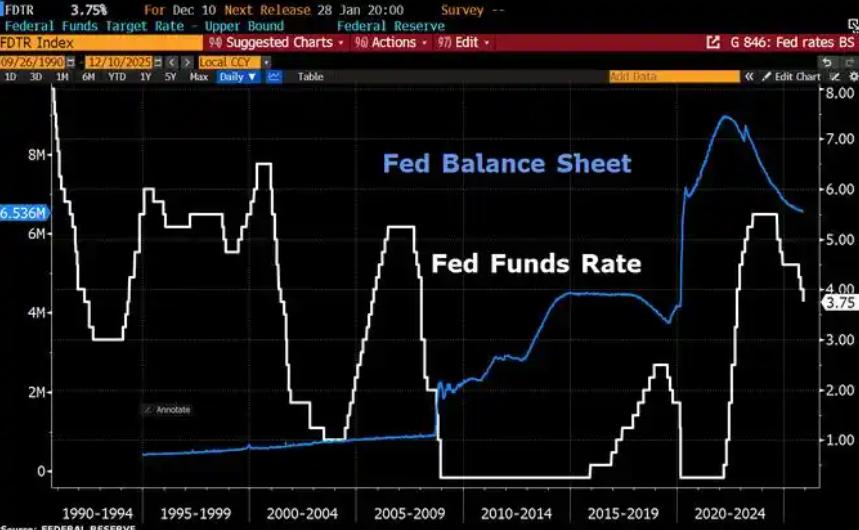
Recently, The New York Times revealed that U.S. President Donald Trump had drafted a letter to fire Federal Reserve Chair Jerome Powell and initiated the process of selecting a new chair, sending shockwaves through global financial markets. Although Trump publicly denied the plan the following day, stating that it was "highly unlikely" Powell would be dismissed "unless he committed fraud," his discussions about the firing in closed-door meetings with congressional Republicans and his strategy of sustained pressure through incidents like the "renovation scandal" have exposed an unprecedented risk of political interference in America’s monetary policy-making mechanism.
Trump’s dissatisfaction with Powell dates back to the Fed’s 2018 rate-hike cycle. At the time, Powell insisted on using tight monetary policies to curb inflation, directly conflicting with Trump’s advocacy for low interest rates to stimulate economic growth. This rift deepened in 2025: while the Fed maintained high interest rates to tackle soaring inflation, Trump’s team, eager to boost economic performance ahead of midterm elections, pressed aggressively for rate cuts. A deeper conflict lies in the principle of Federal Reserve independence. Powell repeatedly emphasized that "monetary policy will only consider economic data" and refused to publicly align with the White House’s policy directions, which Trump viewed as a challenge to his authority. Additionally, Powell’s low-key, pragmatic style clashed with Trump’s preference for "publicity stunts," and persistent criticism of Powell from key aides such as Treasury Secretary Bentsen and National Economic Council Director Hassett further escalated tensions between the White House and the Fed. Notably, Trump’s team has taken concrete actions: the July 15 revelation of the drafted firing letter, coupled with the simultaneous launch of a candidate selection process, indicates they are no longer merely applying verbal pressure but seeking to reshape the Fed’s decision-making through institutional means. Potential candidates like Bentsen and Hassett, who favor looser monetary policies, align closely with Trump’s political goals.
Under Section 10 of the Federal Reserve Act, the Fed Chair serves a 14-year term, and the president cannot arbitrarily remove them unless "dereliction of duty, fraud, or other gross misconduct" is proven. This design aims to insulate monetary policy from short-term political interference—a principle reaffirmed by a Supreme Court ruling in May 2025, which explicitly stated that presidents cannot dismiss chairs over policy disagreements. However, Trump is attempting to bypass this legal barrier using the "renovation scandal." The $2.5 billion renovation of the Fed’s headquarters, which exceeded its budget by $700 million, was labeled by Trump as "extravagant waste" and "mismanagement." Despite the Fed’s explanation that cost overruns stemmed from design adjustments, material price hikes, and unexpected pollution remediation, Trump pressed Congress to investigate whether Powell had made "false statements," seeking to frame the issue as "fraud." This "stretching the truth" tactic represents a creative interpretation of legal provisions. Legal experts note that there is no clear judicial precedent defining "just cause" for removal. If Trump proceeds to fire Powell, it could trigger a constitutional crisis: Powell could immediately sue for an injunction to reinstate him, with the case potentially reaching the Supreme Court. Historically, courts have favored defending Fed independence, but if Trump’s team can prove misconduct, the situation could grow complicated.
Market reactions to the firing rumors underscore the core value of Fed independence. On July 16, U.S. stocks opened with the S&P 500 dropping 0.6%, the U.S. dollar index falling 0.8%, and the 10-year Treasury yield surging to 4.45%. This simultaneous decline in stocks, bonds, and the dollar reflects investors’ deep concern over the politicization of monetary policy. Wall Street widely views Fed independence as the cornerstone of global trust in the U.S. dollar and Treasury bonds. Strategists at Deutsche Bank warn that Powell’s forced departure could trigger a sell-off of dollars and Treasuries, undermining the dollar’s status as the world’s reserve currency. ING notes that if markets perceive the Fed as losing independence, long-term inflation expectations could spiral out of control, ultimately raising government borrowing costs in a "self-fulfilling prophecy." History offers a stark lesson: in the 1970s, the Nixon administration pressured the Fed to cut rates, briefly boosting the economy but fueling hyperinflation, which eventually forced the Fed into more aggressive tightening and a severe recession. Today’s market wariness of Trump’s tactics stems from a collective memory of such historical fallout.
Divisions within the Republican Party highlight a bipartisan consensus on defending Fed independence. Senators like Banking Committee member Tom Tillis have explicitly opposed firing Powell, emphasizing that "ending independence would be a grave mistake." This stance reflects policymakers’ recognition that if the Fed becomes a political tool, America’s financial markets could lose their global appeal—ultimately backfiring on Republican interests. Trump’s wavering stance also reveals his dilemma: he seeks to pressure the Fed to boost the economy but fears the political cost of a market collapse. On July 16, he denied plans to fire Powell while hinting at "personnel adjustments within eight months," attempting to balance manipulation with practical restraint. While this strategy may temporarily calm markets, it cannot bridge the institutional rift.

Since 2022, the Fed has cumulatively reduced its balance sheet by $2.4 trillion through quantitative tightening (QT) policies, leading to a near depletion of liquidity in the financial system.
Since 2022, the Fed has cumulatively reduced its balance sh…
On December 11 local time, the White House once again spoke…
Fiji recently launched its first green finance classificati…
Recently, the European Commission fined Musk's X platform (…
At the end of 2025, the situation in the Caribbean suddenly…
The U.S. AI industry in 2025 is witnessing a feverish feast…